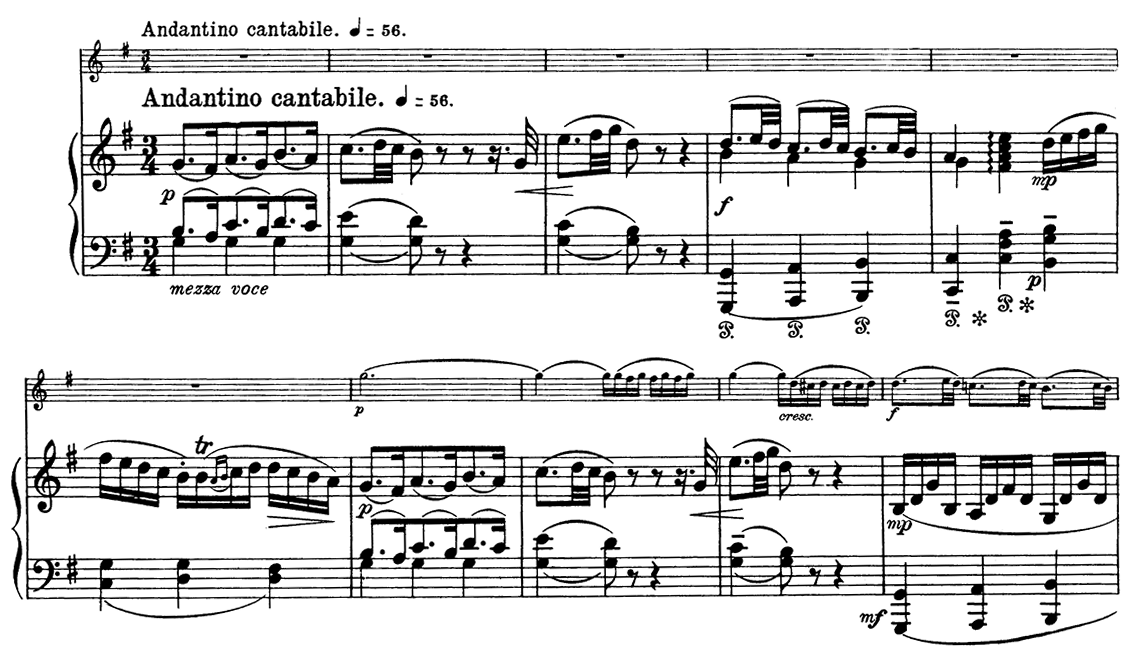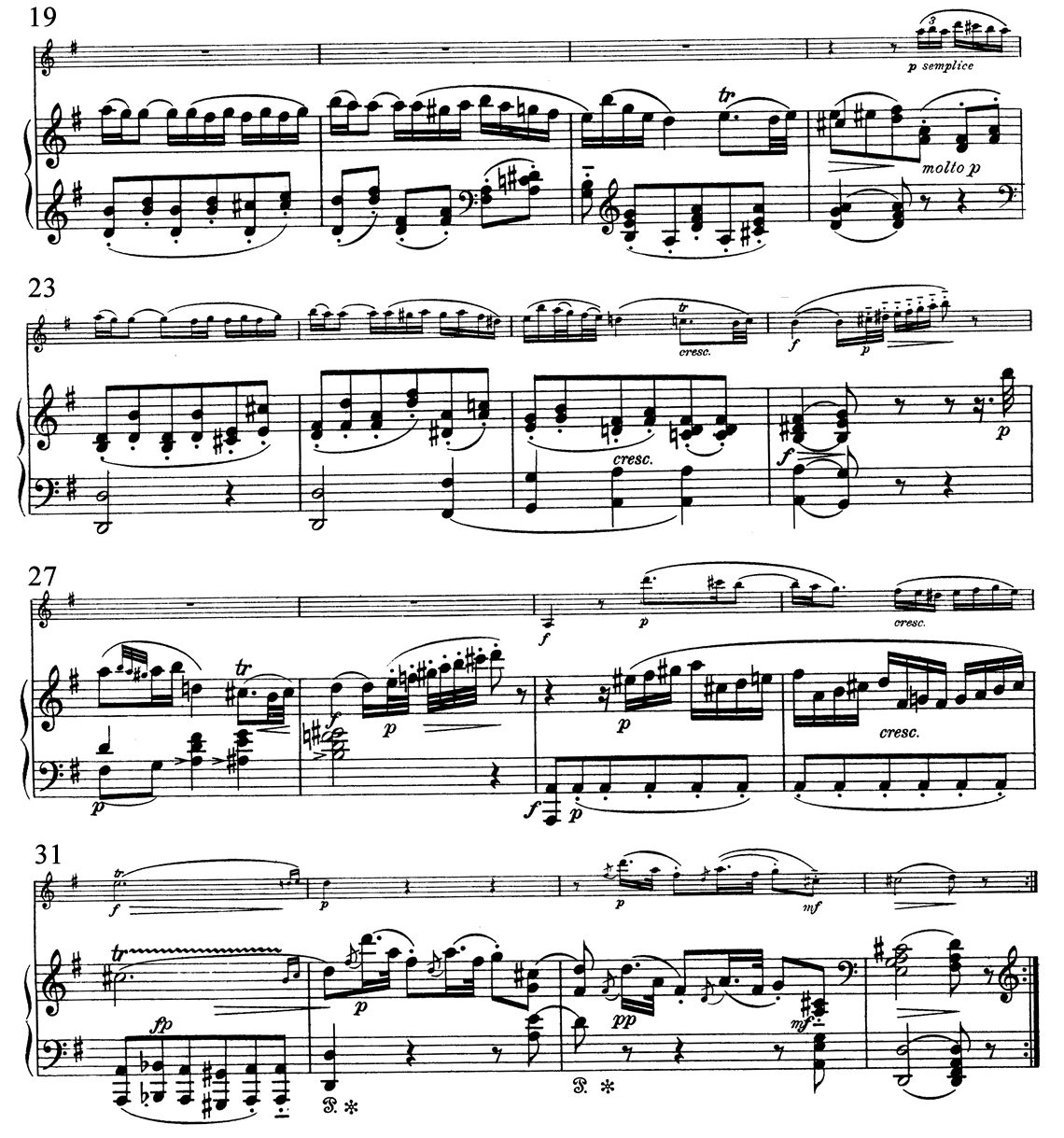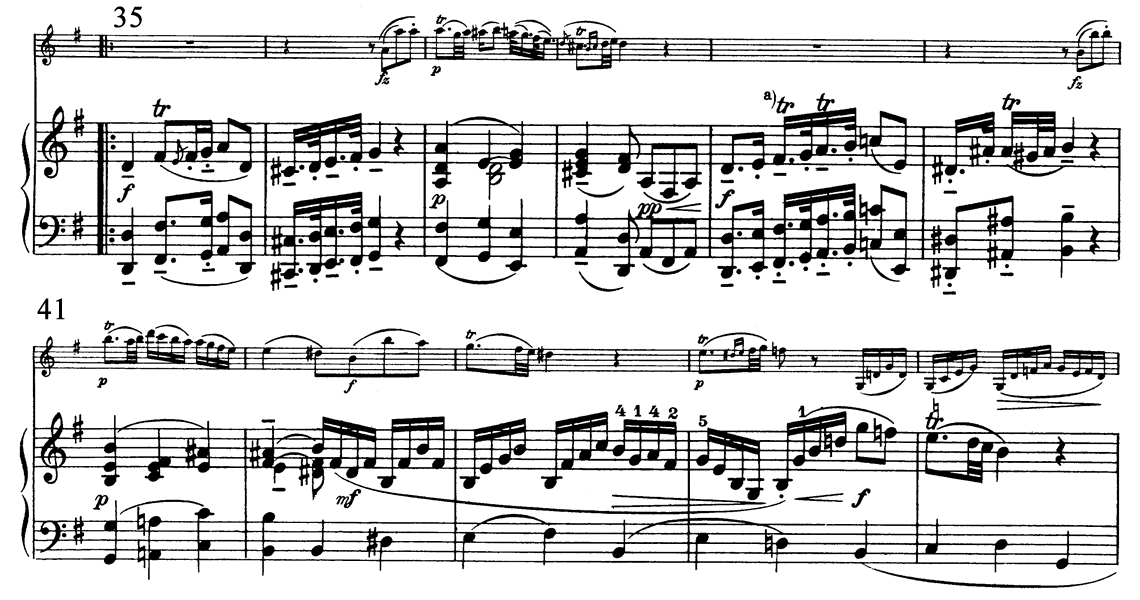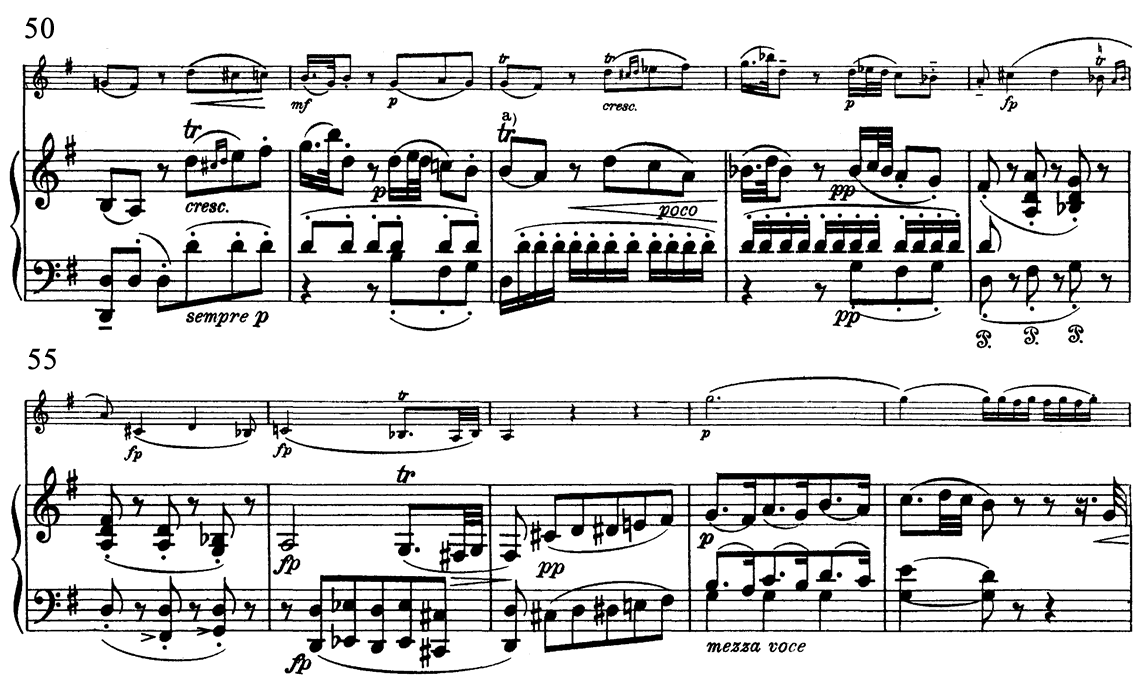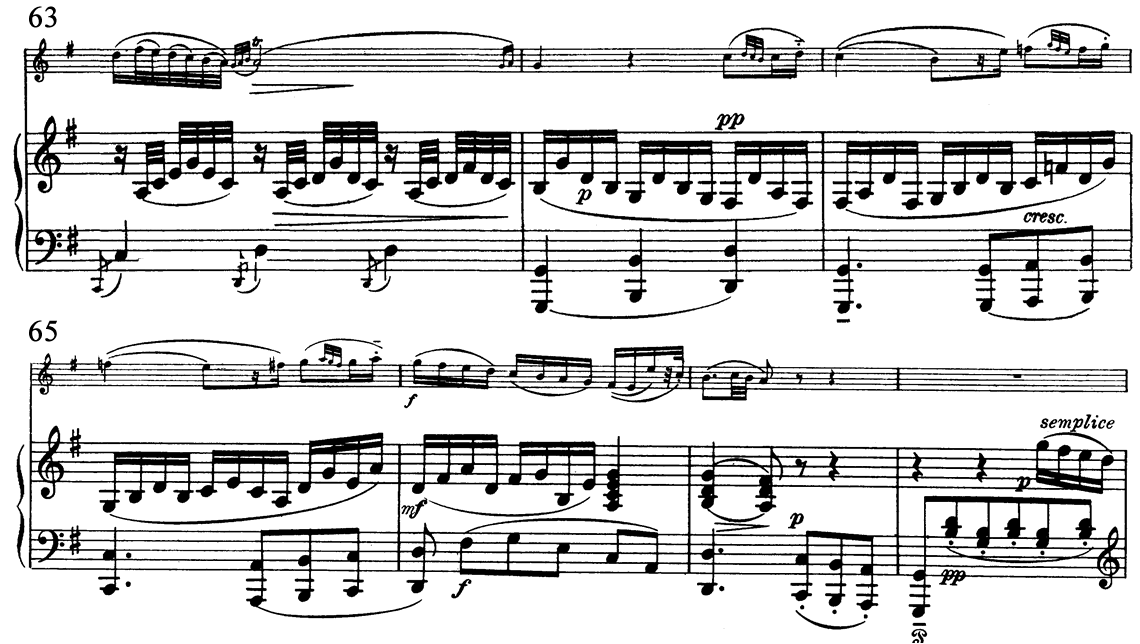Analysis of Mozart’s Sonata for Violin and Piano K. 306 second movement Andantino cantabile
By Sunny Knable
Form
While the most interesting aspects of Mozart’s slow movement pertain to melody, harmony and phrase structure, in terms of the large-scale formal structure, the composer rests on the sturdy architecture of the common Sonata-Allegro form. though with a few idiosyncrasies of its own. The movement begins with what at first seems like an Introduction in the tonic key of G major, articulated by the piano in measures (mm.) 1-6:
The identical material is repeated in the piano as the violin enters in mm. 7-17:
The near-exact repetition of the Introduction-like material underneath the First Subject makes for an ambiguity as to whether the first six measures are an overt Introduction or if, instead, the Exposition has already begun with the first measures. Though one could argue either way, I posit that the opening phrase presents too strong of a theme to be introductory only. After the Transition to D major takes place in mm. 13-17, this same ambiguity is explored in the Second Subject in mm. 18-28, which again starts with a piano-only statement followed by the violin answer to the same material. The Exposition is concluded with a Codetta in mm. 26-34, firmly rooting itself in the dominant key (which also serves as the V of I of G when taking the repeat):
The second part of this binary form begins with the Development in m. 35, taking new motives on a journey of modulations, from D major to E minor at m. 41, to C major at m. 44:
The Retransition is from the pick-up of m. 51 through m. 57, in the parallel minor key of G minor, which serves to prepare the Recapitulation in the tonic key at m. 58:
Interestingly, perhaps to be clear about the start of this return, Mozart omits the ambiguity of the opening section, instead beginning with the two parts of the First Subject right away and in counterpoint (corresponding to m. 7). The Transition of the Recapitulation is from mm. 64-68; while nearly identical to the first, it is altered to remain in the home key. The Second Subject (at m. 69) now in the tonic, is almost identical to the Exposition’s, though with several changes which this paper shall soon discuss detail. What once was a Codetta ending the Exposition in the dominant, is now a Codetta preparing a cadence in the tonic, lasting the final six measures of the movement:
©2018 Sunny Knable. Published by teoria.com
